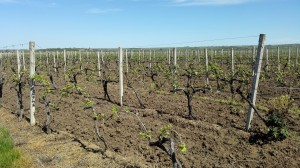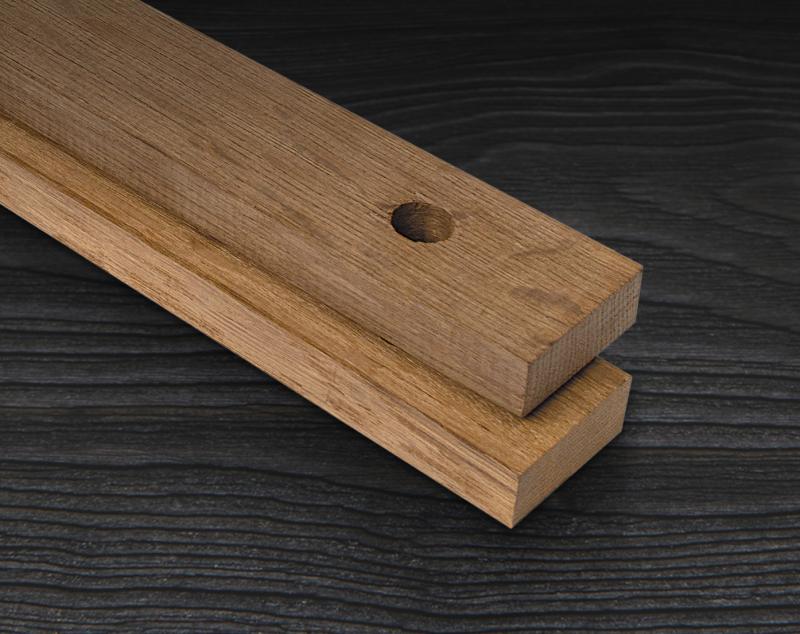News
News / 05/22/2016 / 1583

As we were approaching the vineyards owned by Rnjak Winery, a new winery in South Banat (North Serbia), the lyrics of the song "Wind of Change" were passing through my head: The future's in the air, I can feel it everywhere blowing with the wind of change. Does the emergence of another young winery in this part of Serbia mean that modern winemaking is finally rising in Banat and that different sort of wind will start blowing over Deliblato sands and Vršac Hill?
South Banat in terms of winemaking is lacking neither history nor tradition ... Written records report that hectoliters of local wines were once exported to Western Europe. Before the advent of phylloxera, namely in 1875, over one million "akovs" of grapes (the ancient unit of volume "akov" measures 57kg) were harvested in vineyards surrounding the city of Vršac. History is full of similar statistical data indicating the scope and importance of wine production in this region. However, in the last decade, South Banat region mainly lived from its former glory and struggled with the difficulties of post-socialist transition. Somehow the news from South Banat were predominantly negative: bankruptcy of ambitious Ilandža Winery project, failed attempt to sell Vršački Vinogradi winery to the Chinese resulting in bankruptcy of this winery; consequently, 1,600 hectares of vineyards owned by Vršački Vinogradi continue to deteriorate, whilst small wineries from the villages of Gudurica and Veliko Središte with scarce resources strive to do hardly anything else apart from welcoming an occasional bus packed with tourists who come for lunch and to taste local wines. There is no serious strategy or ambition concerning this region to make a breakthrough in the Serbian wine market (and without material resources necessary for modernization of production).
The Rnjak family comes from Benkovac (Croatia), and a dream of winemaking led them via Belgrade to vineyards of Vršac. Two years ago, they bought a vineyard and an old house in Gudurica with traditional wine cellar (lagum), where the winery is now located. In the future, there are also plans for expansion of accommodation facilities in order to welcome tourists. Conversation with Ljiljana Rnjak reveals incredible energy and dedication. And perseverance to build a winery from the scratch with her own hands, which could be a prime example to other wineries from Veliko Središte and Gudurica.
From the beginning, Ljiljana faced challenges. The vineyard in Veliko Središte is 8 years old. Family Rnjak has invested a lot of effort over the last three years to bring the vineyard in good condition and prepare it well for the years to come. And then came the struggle against harsh weather conditions during 2014. In doing so, the situation was further complicated by the very position of the vineyards located at the foot of Vršac hill. Such position makes the vineyard more vulnerable to frost during the winter time because cold air accumulates at the foot of the hill. Vršac vinegrowing area is characterized by fairly long period of potential frost threat which covers nearly 6 months in the course of year. The first autumn frosts may occur at the end of October, whilst spring frosts may occur until the end of April. The following varieties are planted in the vineyard covering 6.5 hectares: Chardonnay, Sauvignon Blanc, Merlot, Cabernet Sauvignon, Muscat Hamburg and Pinot Noir. Apparently the previous owner planted the vineyard during the initial renaissance of modern Serbian vinegrowing when new plantings sprang up throughout Serbia, dominated by international grape varieties, without much thought given to assessment whether a variety is suitable for the particular region or not. So, it first came to my mind that Cabernet Sauvignon (although permitted variety in South Banat wine region) wouldn't be the best choice for a vineyard in Vršac. But Ljiljana seems determined to face unpredictable climatic conditions and demanding vineyard in order to maintain every year the quality of wine at a level that consumers would appreciate.
Rose 2014 - Rnjak Winery - (varietal composition: 100% Muscat Hamburg) Rnjak winery's firstborn. Alcohol level 10.5% clearly shows how difficult it was to obtain ripe grapes in 2014 due to frequent rains. Dry wine, Muscat aromas, forest strawberry, raspberry, Turkish delight, wild roses. Unpretentious, uncomplicated wine, moderate acidity prevents it from being predominantly boring.
Rose 2015 - Rnjak Winery - (varietal composition: 60% Muscat Hamburg, 30% Pinot Noir, 10% Riesling) It is evident that the year 2015 was more favorable, thus the resulting wine in the bottle is significantly better. Medium body and noticeably more volume in comparison with rose 2014. Alcohol level 12.5%. Acidity lower than in 2014 and more harmonious overall impression. Chardonnay 2015 - Rnjak Winery - A classic example of Chardonnay that the Serbian market is accustomed to. Medium-bodied wine, nice acidity, distinctly fruity nose, bursting with aromas of tropical fruit, pineapple, melon ... The same impression continues in the mouth: tropical cocktail, pineapple, banana, pear. Cambisol is suitable soil type in the vineyard for this style of wine because it contributes to the expression of fruitiness. Alcohol level 14%. Then we continued the tasting in the wine cellar as we were about to taste red wines. We first compared Pinot Noir from vintages 2014 and 2015. There you see huge difference caused by weather conditions. Pinot Noir 2015 - Rnjak Winery - in the mouth, a distinct varietal aroma of dark cherry accompanied with red berries, red currant, cherry. Youthful, fresh. Tannins still not rounded, but they will certainly benefit from some barrel aging. Mild bitterness in the finish. Cabernet Sauvignon NV - Rnjak Winery - (60% Cabernet Sauvignon 2014, 40% Cabernet Sauvignon 2015) Wine aging in Serbian barrique. What I like most in this wine is how the wood is integrated into wine's overall expression. Beautiful vanilla and spicy notes harmoniously complement fruitiness on the nose. However, the palate clearly reveals that in this region Cabernet Sauvignon will have difficulty to show its full potential, and this is reserved only for exceptional vintages. The wine is now ready for drinking. Simply, the wine lacks backbone and tannic structure to ensure aging potential. Given that Rnjak Winery is just exploring potential of their vineyard, it might be worthwhile to assess the result of blending Merlot and Cabernet Sauvignon, where Merlot would prevail in the resulting wine. Merlot 2015 - Rnjak Winery - And then we taste the barrel sample which confirms that Merlot could be the flagship wine of Rnjak Winery. Medium-bodied, distinct fruitiness complemented by notes originating from Serbian oak aging. Very pleasant wine, just as Miroslav, Ljiljana's husband, described it: "enjoyable wine from Banat." When we came out of the wine cellar, I felt the touch of Vršac hill wind on my face. The wind that protects vines from fungal diseases and allows for better pollination. The wind of change in Southern Banat, which brought to Serbian wine scene new wineries such as Rnjak Winery, Galot Winery, Đorđe Winery and others ... This means better future for South Banat wine story that is still waiting to be told. And I recall the words of Miroslav, Ljiljana's husband, who admitted with genuine dedication that his goal in the future is to locate and preserve Kreaca, an autochthonous vine from Banat. This is the energy and power of an individual which could move Vršac hill.

Tomislav Ivanović
Awarded wine writer, wine critic and contributor to selected wine magazines. WSET3-certified author and editor-in-chief of www.vinopedia.rs. Member of Vojvodina Sommelier Association. Juror in national and international wine competitions. Lecturing about wines of Serbia and the Balkans. Local partner of Wine Mosaic organization. Co-founder of International Prokupac Day.

Pročitajte i druge članke iz ove rubrike:


GIUAANI - VINSKI TURIZAM NA GRUZIJSKI NAČIN
PROČITAJ VIŠE


SPASIMO STARE VINOGRADE SRBIJE
PROČITAJ VIŠE


NAŠLI SMO ANTIGONU IZ ORAHOVCA
PROČITAJ VIŠE


SRPSKO VINO KOŠTA 100 EUR - I ŠTA ĆEMO SAD?
PROČITAJ VIŠE


MOŽE LI VINO BEZ BURETA? IMA LI ALTERNATIVE?
PROČITAJ VIŠE
Winner MILLESIMA BLOG AWARD 2016

Pobednik MILLESIMA BLOG AWARD 2016
VINO & FINO wine personality of the year 2016

VINO & FINO vinska ličnost godine 2016